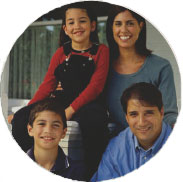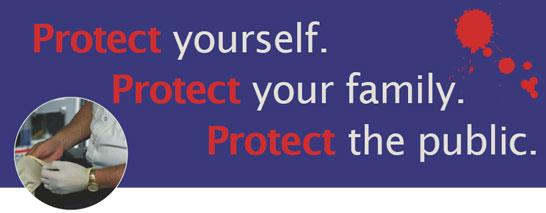| |
NIOSH researchers visited a number of prisons and jails to learn more about current practices and procedures being used to protect health care workers from bloodborne diseases. This poster is meant to be informative and reinforce how frontline health care workers can protect themselves from exposures to bloodborne diseases.
How can a correctional health care worker be exposed to bloodborne pathogens on the job?
- Needlesticks or cuts from used needles or sharps.
- Contact of your eyes, nose, mouth, or broken skin with blood.
- Assaults – bites, cuts, or knife wounds.
- Splashes or punctures – especially when drawing blood.
How can you protect yourself?
- Get the hepatitis B vaccine.
- Read and understand your employer’s Exposure Control Plan.
- Dispose of used sharps promptly into an appropriate sharps disposal container.
- Use sharps devices with safety features whenever possible.
- Use personal protective equipment (PPE), such as gloves and face shields, every time there is a potential for exposure to blood or body fluids.
- Clean work surfaces with germicidal products.
What should you do if you’re exposed?
- Wash needlesticks and cuts with soap and water.
- Flush splashes to nose, mouth, or skin with water.
- Irrigate eyes with clean water, saline, or sterile wash.
- Report all exposures promptly to ensure that you receive appropriate
followup care.
For additional information:
Centers for Disease Control and Prevention (CDC)
Telephone: 1–800–CDC–INFO
TTY: 1–888–232–6348
www.cdc.gov/ncidod/dhqp/bp.html
National Institute for Occupational Safety and Health (NIOSH)
Telephone: 1–800–CDC–INFO
TTY: 1–888–232–6348
 www.cdc.gov/niosh/topics/bbp/correctional www.cdc.gov/niosh/topics/bbp/correctional
Protect yourself today—be there for your family tomorrow.
DHHS (NIOSH) Publication No. 2007–157
|

|
Related Resources/Publications:
|
|


